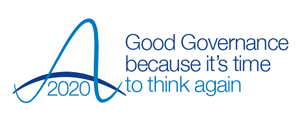Plan to collaborate
26 June 2020

The NHS Long Term Plan (LTP) sets out an ambition that, by April 2021, there will be one strategic commissioner for each integrated care system footprint. In many areas this will mean that clinical commissioning groups (CCGs) will need to merge – and it may be that this is already in train.
But the timelines set out in the LTP were established before COVID-19 and a number of our clients are beginning to push back on the grounds that these timelines are now unrealistic, especially given the range of unknowns associated with a potential second wave of the pandemic. We have heard that there may be a relaxing of some process in order to facilitate the easier establishment of merged CCGs.
Whatever the outcome, it is clear that the COVID-19 response has reinforced the value of increased partnership and collaboration between health and social care organisations and that this will be the ultimate direction of travel for NHS organisations.
A central question then – and one we have received numerous enquiries about through our advisory service – is what governance mechanisms are available to support CCGs working more closely together, and what are some of the common pitfalls to be avoided?
There are a number of governance mechanisms at the disposal of CCGs to support joint working and decision-making, ranging from the informal to the formal. Two of the most commonly utilised are to establish joint committees and committees in common.
Staying within the law
In partnership with thiNKnow and Hill Dickinson, GGI recently put together a short paper explaining the implementation of joint committees and committees in common. The advice it contained is as pertinent now as it ever was.
Importantly, the guidance set out some of the key measures that CCGs need to respect to stay within the law.
In particular, joint committees can only be established for the purpose of CCGs jointly exercising their commissioning functions. Each CCG should nominate the relevant representative members and the committee then has delegated authority to make binding decisions on behalf of the constituent CCGs.
In all other instances, CCGs should introduce committees in common. Committees in common occur when each individual CCG committee meets at the same time, in the same place (this can be virtual), and with the same agenda.
It is important to remember that these are committees meeting in common. Each CCG will retain its membership and quoracy arrangements, as described in their individual terms of reference. Each individual CCG must also take its own decisions and it must technically be possible for each committee in the arrangement to reach a different decision (although this will be unlikely).
The impact of COVID-19
In recent months, we have received several enquiries about how to manage joint committees and committees in common during the pandemic. We present a few of our reflections below.
We have previously written about the increasing digitisation of meetings within NHS and across the wider public sector. In many ways these have improved the overall effectiveness of meetings. For example, by reducing the travel burden placed on GPs and lay members or through more concise and impactful agendas.
Committees in common, however, often involve significant numbers of participants, which can make the virtual coordination of meetings a complex and meaningful challenge and contribution difficult. Just as in physical meetings, some of this can be mitigated through clear and effective chairmanship. It will also be important that the chat function is utilised appropriately and that all members are engaged to ensure that some do not go missing. Our bulletin on virtual meetings etiquette is a good place for governing bodies and committees to start when considering how best to manage these forums virtually.
Quoracy and public engagement
We are often asked about quoracy arrangements for committees in common. It should be remembered that there is no single quoracy arrangement for committees meeting in common, so each individual committee must be quorate as described within their separate terms of reference in order to take decisions on behalf of the CCG. Despite some of the challenges experienced by NHS organisations, this has not changed during the pandemic.
Finally, throughout all of this, there is also the question of what appropriate public involvement and engagement looks like. This is not unique to committees in common, but it might be felt more acutely given that there will be several organisations involved. It is important that boards remain accountable to the public during this period.
We have seen boards and governing bodies respond to this in a plethora of ways ranging from suspended public meetings altogether through to inviting members of the public to observe using teleconferencing software. It is important to remember that there is no one-size-fits-all model, and boards will need to make their own mind up about what a proportionate response looks like.
Are you considering, or have you recently established joint governance arrangements? We’d be very interested to hear your thoughts.
If you’re interested in discussing these and similar issues in a peer-to-peer forum, join us for our weekly Good governance because it’s time to think again webinar. Register by email for events@good-governance.org.uk to join the conversation.
We are keen to hear your views. If this briefing prompts any questions or comments, please call us on 07732 681120 or email us at advice@good-governance.org.uk.
Chris Smith
Consultant
